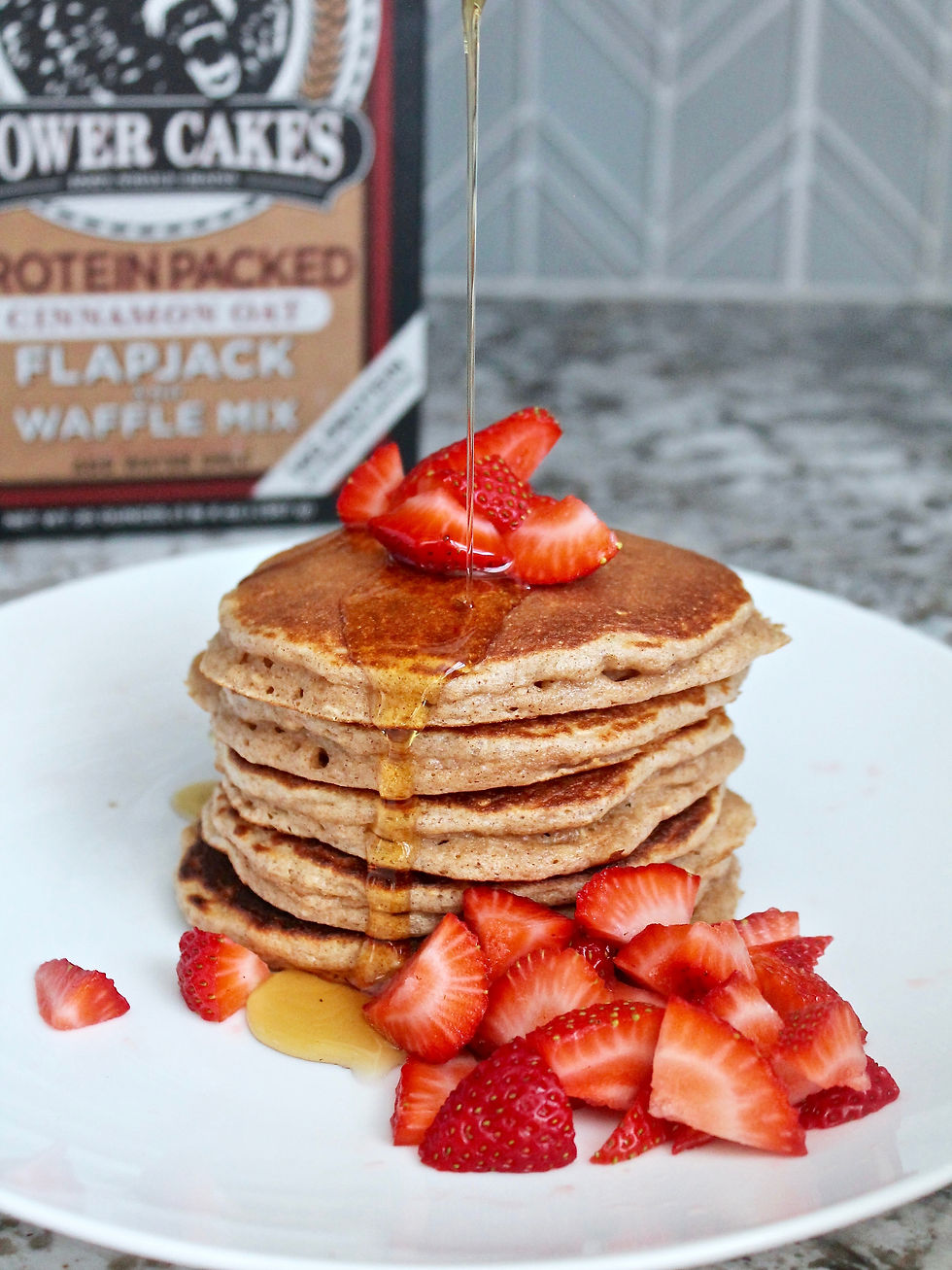Common Runner Recovery Nutrition Myths - DEBUNKED
- Maddi Osburn

- Nov 10, 2020
- 4 min read
Updated: May 10, 2021
**TW: There is a breakdown of nutrition content between protein powders and milk products on this post that includes calories.**
There is information everywhere on running nutrition. It is present on the internet, from healthcare professionals, your local GNC staff member, and even family and friends. How do you know if the nutrition recommendations you hear or read are valid? Specifically, how do you know the nutrition recommendations for your post-run recovery meal or snack is actually going to improve your endurance, speed, and recovery? I have gathered 3 of the top nutrition myths that I hear on a regular basis for post-run recovery strategies to debunk.
MYTH #1
Consuming incredibly large amounts of protein at your post-run meal or snack is the best way to increase muscle gains.
FACT: >40 grams of protein in one sitting is not beneficial to increase muscle gains. You can consume too much protein in one sitting, and too much throughout the day.
Instead of using the protein you consumed towards the muscles/recovery, it will be converted into energy. If that energy is not needed, or utilized later, it will be stored as fat.
So what do we do? The best way to stimulate muscle adaptations is consuming protein sources every 3-5 hours, not all in one sitting. Crushing your running training plan, combined with regular, quality protein intake, will allow your body to adapt and become more efficient at using the protein you consume towards muscle growth and endurance. You do not have to consume inordinate amounts of protein to get these desired effects.
MYTH #2
If I follow a vegetarian/vegan diet, I will not be able to eat enough calories, protein, or nutrients to sustain my training.
FACT: "Well planned vegetarian diets are nutritionally adequate, appropriate for athletes at all levels and provide health benefits in the prevention and treatment of chronic diseases.”
Consuming a variety of plant-based foods, and in adequate amounts, can be an effective and sustainable option for athletes from the recreational to elite level. There are multiple plant-based protein options to choose from that can meet an athletes needs.

Legumes (beans, peas, lentils)
Dairy (think yogurt, cheese, milk, kefir)
Nuts
Nut Butter
Tempeh
Tofu
Quinoa
The main barriers associated with this dietary pattern for athletes is eating enough to meet energy needs due to the high fiber and low energy density components of the diet. It is important to note that this is all under the assumption that it is well planned. If not well planned, inadequate energy, protein, and nutrient deficiencies may be present. There are ways to overcome this, and working one on one with a Sports Dietitian can be incredibly viable for an athlete to make sure they are hitting their nutrient needs.
MYTH #3
A protein shake is my best option for post-run fueling.
FACT: Whole, protein and nutrient-dense foods and protein shakes can be viable options for post-run recovery and improve endurance and speed.
If you have been here for any extended period of time, you will know that I do not advocate for the "sexy" or "exciting" recommendations that *may or may not* work. I get it. Protein shakes are much more exciting than, say, chocolate milk. Hear me out...
I am not completely knocking protein supplement use. I do believe there are times and places for protein shakes/supplements post-run. However, we continue to find evidence that whole, protein and nutrient-dense foods will provide additional benefits to an athlete compared to a supplement/isolated nutrient. Protein supplements (good quality and third-party tested) can increase muscle growth and favorable adaptations. When I say additional benefit, I mean that whole, protein-dense whole food options, like say chocolate milk, will provide those favorable recovery adaptations as well as other minerals/vitamins. Not to mention, whole food tend to be much more budget-friendly.
Let’s look at a popular whey protein shake vs. chocolate milk.
Standard Protein Powder Low Fat Chocolate Milk
Per 1 serving: 6-8 oz (1 scoop) Per Serving: 8 oz (1 cup)
190 calories 140 calories
2.5 grams fat 2.5 grams fat
7 grams carbohydrate 21 grams carbohydrate
30 grams protein 8 grams protein
12% Daily Value: Calcium 20% Daily Value: Calcium
8% Daily Value: Sodium 10% Daily Value: Potassium
4% Daily Value: Potassium 15% Daily Value: Vitamin A
Total Cost: $16.98 or $0.94 per serving. 10% Daily Value: Vitamin D
Total Cost: $2.49 or $0.15 per
serving.
As you can see, there can be benefits to either choice. Here are some take aways.
You get more vitamins, minerals, and carbohydrates in one serving of low-fat chocolate milk than 1 serving of a standard protein powder.
Whole, protein and nutrient-dense food options are budget friendly and have portable options.
Protein powders, when third-party tested, can be a quick, portable, and convenient highly concentrated source of quality protein.
What are some myths, or claims, that YOU have heard and want to know their validity? Leave a comment, or click here to send me a message!
SUBSCRIBE TO THE FLEXIBLE NUTRITION NEWSLETTER
Are you curious if your current recovery nutrition strategy is working for you? Do you have questions that NEED answered? If you subscribe to my newsletter the end of day on 11/13/20 - I have a special offer to send you! Not only do you get this special offer, I send out newsletters monthly with additional news, recipes, and sports performance nutrition strategies not seen anywhere else! I hope to see you there!
Kindest regards,
Maddi Osburn RDN LD
References:
PMCID: PMC6521324
Position of the Academy of Nutrition and Dietetics, Dietitians of Canada, and the American College of Sports Medicine: Nutrition and Athletic Performance.
Sports, Cardiovascular, and Wellness Nutrition Dietetic Practice Group. Sports Nutrition: A Handbook for Professionals. 6th ed., Chicago: Academy of Nutrition and Dietetics. 2017.










Comments